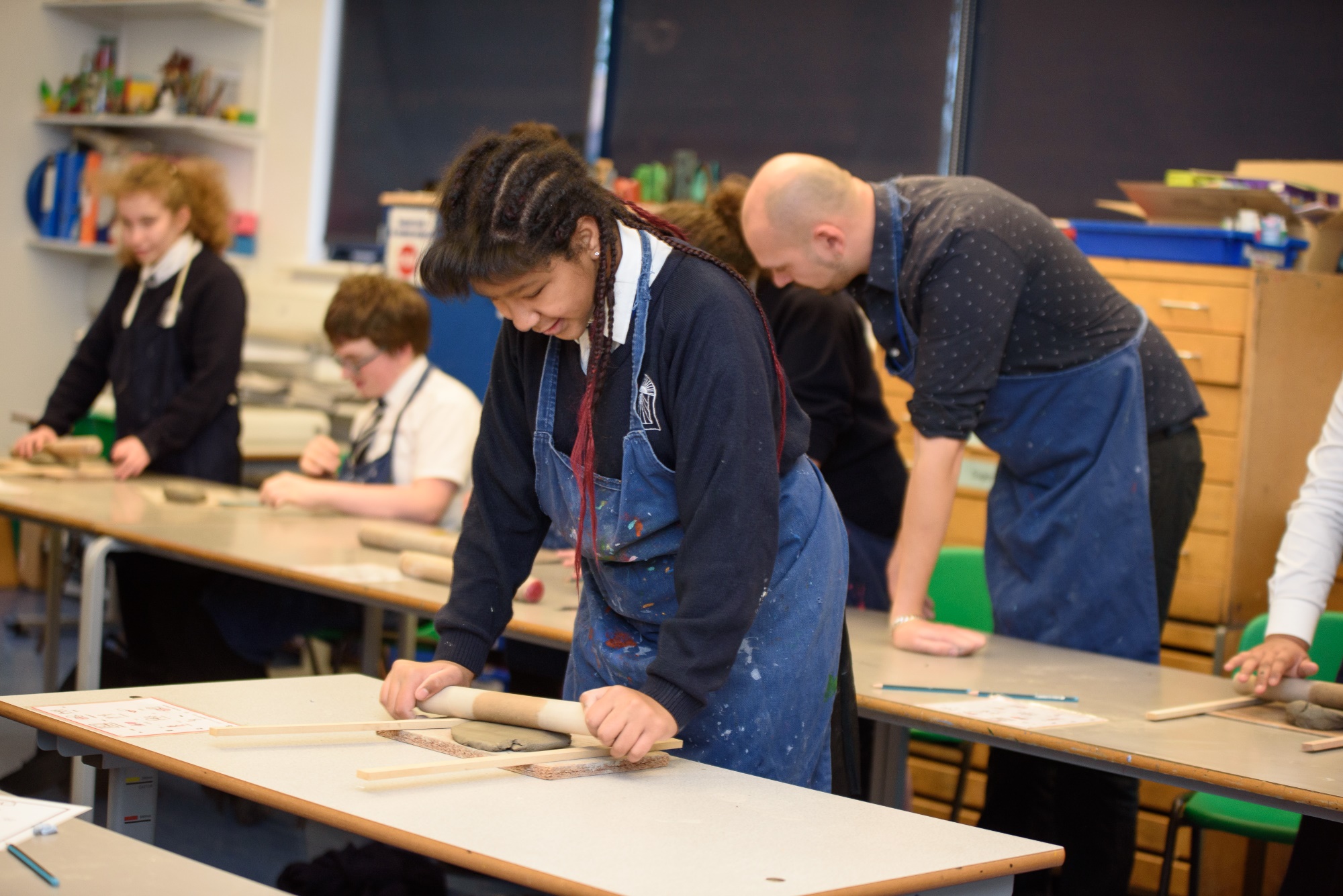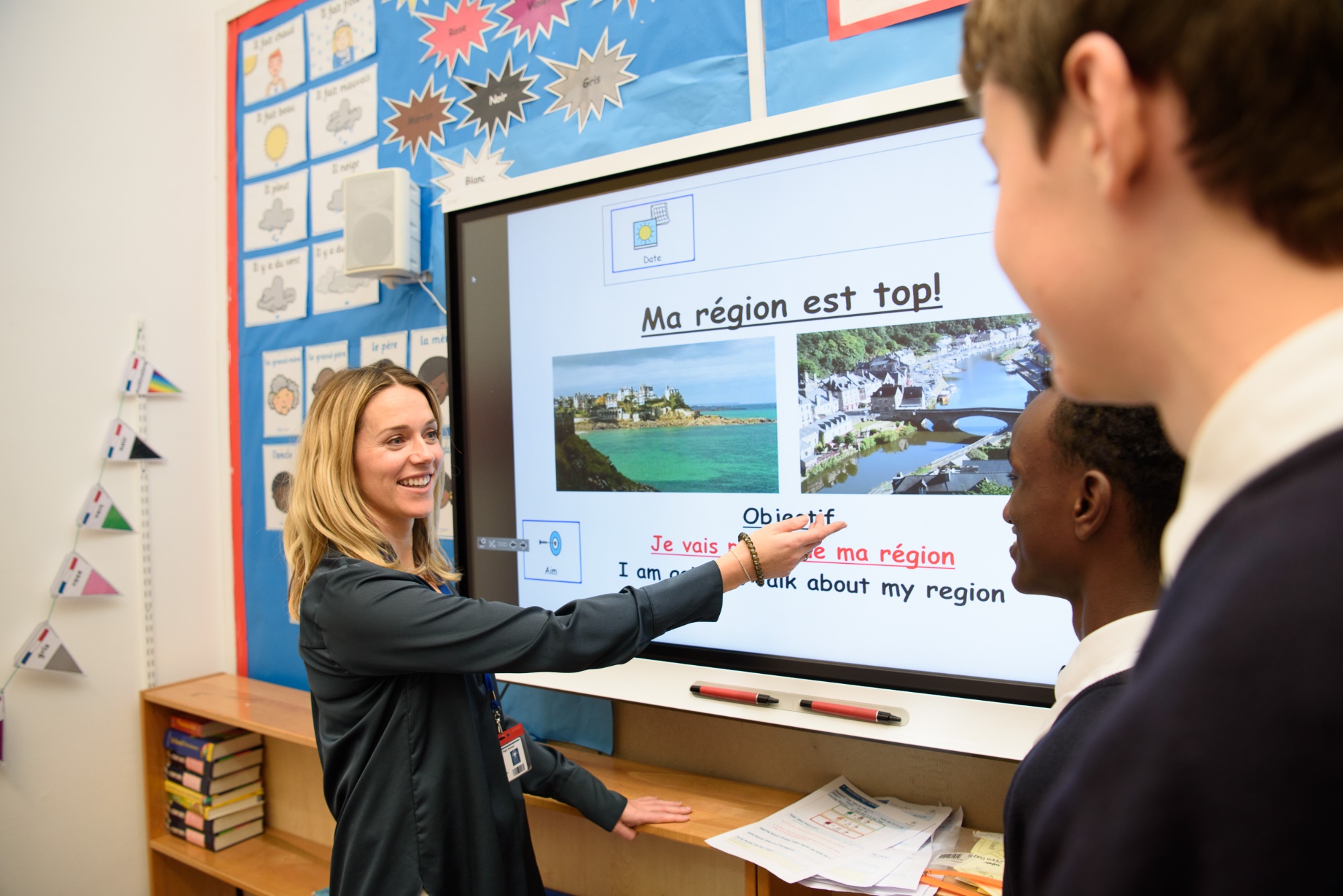21.93° few clouds
Art
 Navigate to the following curriculum areas using the topic buttons below:
Navigate to the following curriculum areas using the topic buttons below:
Rationale - What is the evidence base for selected strategies and curriculum choices?
Increasing the use of IT and digital media
This area has been developed to aid pupils who are unable to access curriculum/course content that is usually completed using more physical tasks.
This concept has been promoted through the ‘Inspired Classroom’, an organisation dedicated to enhancing the learning experiences and opportunities by integrating the Arts with social emotional learning. They state that “Digital tools reinvent the approach to art education by enhancing students’ creativity and collaboration. Digital art resources expand students’ imagination by encouraging them to make multimedia content from paintings to graphics. As these cloud-based resources can also be accessed remotely, students can conceptualize, create, and collaborate on art projects with their peers anytime and anywhere”.
Digital Media in Art builds upon and develops computer skills and knowledge, allowing all pupils the opportunity to express themselves through their artwork.
- Increased access. This focus on ensuring pupils are able to independently create digital media has set a more even playing field for cohorts and allowed pupils with physical disabilities the opportunity to produce work of the same standard as their peers. In addition, the recent period of home learning highlighted that some pupils do not have access to basic Art materials outside of school and are unable to complete homework tasks (or continue to build on their artistic development). By introducing digital tasks, we are creating a more accessible area of work that ensures no pupil will be disadvantaged.
- Increased productivity. Digital media allows pupils to correct mistakes in a more time effective manner, this still provides the same learning opportunities as making mistakes with physical Art but has the added benefit of aiding pupils to complete tasks in less time.
- Convenience. Creating digital medium requires pupils to use less Art materials and can be done anywhere using a laptop, tablet or smartphone. Pupils in housing that does not facilitate larger, messier activities are still able to complete tasks.
- Increased Career options. Skills in digital Art can open opportunities within a variety of industries, the increased need for digital Arts in various careers provides additional pathways for leavers with advanced IT skills when beginning their KS5 studies.
Use of adapted media and tools
This area has been developed to aid pupils, primarily those requiring support with fine motor control, to access all tasks and ultimately qualifications that would be otherwise inaccessible to them. This research focused strongly on the “Adaptive Art” movement, developed to provide all young people with a positive experience that can translate into enhanced classroom performance and increased ability in Art. Joseph Campbell’s book, ‘Adaptive Art; Deconstructing disability in the classroom’ states, "For many students living with disabilities, communication is often difficult.” Observing this difficulty fuelled my desire to develop adaptations in my art lessons that would facilitate communication with my students while also engaging them in the visual arts. Trying new methods, materials, and tools has allowed me to remove many of the barriers I observed, enabling my students to express themselves and their ideas through art.
A range of new and adapted tools have been introduced with a trial an error approach that caters for each individual’s specific needs.
- Increased access. Through research and investigation, physical Art tools have been developed and created to allow all pupils to access tasks in some way. Often this will result in pupils requiring slightly different work to their peers, however the intended outcome is to ensure all pupils are given the opportunity to try activities covered in Art lessons.
- Personal development. Adaptive Art’s methods and ideas for teaching and adapting art activities, media, tools, and techniques aim to engage pupils in meaningful and creative self-expression. As these tools often require adult supervision or guidance their use provides the added benefits of building staff/pupil relationships, bridging communication gaps and giving students a productive and creative outlet.
- Inclusion. The use of the Adaptive Art often allows pupils to complete the same work as their peers, albeit in a slightly different way. This promotes a feeling of equality amongst students and is an effective tool in increasing pupil confidence in Art.
Promoting/supporting Art in other subjects
This area has been developed due to an increase in the use of Art in other areas of the school and in line with the Artsmark philosophy of implementing the arts across the whole school. This idea is the bedrock of the Artsmark criteria, they believe a whole school approach “positively impacts the desire, uptake, and passion” for the Arts within schools. At Woodlane we aim to promote this by ensuring that Art is embedded into all subjects, and that Art activities are delivered effectively with guidance form an Art specialist, pupils will make greater progress in their artistic development and are able to use the skills learnt in Art lessons to access cross curricular activities. Knowledge and guidance are regularly shared with staff who may feel less confident delivering Art based activities, demonstrations and the sharing of resources has proved to be highly beneficial to the success of these tasks.
- Increased access. Many subjects outside of Art now incorporate artistic activities into their teaching to create variety and encourage engagement. Pupils who may find literacy-based activities challenging are able to express themselves in an alternative way, allowing them the opportunity to match the success of their peers.
- Quality of work. Demonstrations given to non-Art teachers incorporate trouble shooting methods and highlight potential challenges that may have been otherwise unforeseen. This allows staff to approach their Art based activities with increased confidence and a better understanding of success criteria.
- Personal development. Art activities conducted in other subjects will often require the use of skills learnt in Art lessons. This allows pupils to approach tasks with increased confidence and allows them the opportunity to encounter certain skills more regularly, aiding their artistic development.
Intent – What is Woodlane aiming to achieve through its Art curriculum
- To develop a love of Art.
- To develop the habit of making Art for enjoyment.
- To know some of the main periods in Art history.
- To acquire a wider Art vocabulary.
- To engage pupils through multi-sensory lessons.
- To be able to recognise the role of artists, craft makers and designers in society.
- To be able to create a personal response to an artist and their Art style.
Implementation – How is the Woodlane Art curriculum delivered?
Curriculum Delivery
- Pupils have full access to the Art National Curriculum which is differentiated to meet pupils’ learning needs and styles.
- The Art curriculum is designed to be challenging, appropriate to each pupil’s stage of development.
- The Art Curriculum offers opportunities for cross-curricula learning, to ensure pupils make significant personal development, including:
- Theme days;
- In-house Art events;
- Educational visits;
- SaLT strategies/PGSS integrated in to teaching;
- Communicate in Print allows all students to access tasks;
- Use of a wide range of Media to explore popular culture, bias etc. and create own work etc.
- The KS3 Art and Design curriculum is taught through 2.5 hours contact time (1.7 hours in year 9)
- The KS4 Art and Design curriculum is taught through 2.5 hours contact time per week
- The Art and Design curriculum is designed to build and expand on previous skills and subject knowledge, over a 5-year period. It also plans for opportunities for repetition to embed knowledge, increasing the chance of information recall and to integrate new knowledge into larger ideas.
- Typically 100% of Woodlane pupils achieve a GCSE in Art and Design.
- Where pupils are unable to access the GCSE qualification they will undertake an Entry Level Certificate in Art.
- We recognise and celebrate the impact/benefits of Art and all pupils will continue their Art studies into KS4, this is compulsory.
- We provide additional extra-curricular activities, including:
- Lunchtime Art sessions;
- After school GCSE Art club.
Teaching and Learning
- Our pupils are taught by transition teachers in Year 7 and subject specialists from Year 8 to Year 11.
- The Art and Design curriculum is differentiated broadly into 3 levels of challenge, ‘all’, ‘most’ and ‘some’. Further differentiation and personalisation is implemented when required.
- Art and Design homework is provided on a standardised format and is differentiated to provide the appropriate level of challenge.
- In Art we have a 3 tiered approach to supporting a pupil’s learning, including:
Universal – this is the teaching your child will receive from the Art and Design subject teachers and will include adaptations to match learning needs. All classes:
- Are supported by a teaching assistant (TA);
- Have a maximum of 12 pupils per class to ensure there is a high level of support available from the teacher and TA;
- Are multi-sensory;
- Are dyslexia friendly;
- Integrate speech, language and communication support;
- Are supported either directly or indirectly by speech and language therapists; and
Targeted – it may be appropriate to consider making additional short term special educational provision to remove or reduce any obstacles to your child’s learning. This takes the form of a graduated four part approach of a) assessing your child’s needs, b) planning the most effective and appropriate intervention, c) providing this intervention and d) reviewing the impact on your child’s progress towards individual learning outcomes.
Interventions may include:
- Practical support and resources are made available for pupils with physical impairments or difficulties;
- One to one support from specialist Art TA; and
- Structured introductory tasks for pupils who are encountering a media or material for the first time, designed to developed skills and consolidate understanding of the processes required.
Specialist – it may be necessary to seek specialist advice and regular long term support from a specialist professional in order to plan for the best possible learning outcomes for your child.
Assessment
- Pupils collate Pupil Achievement Books, where they showcase their best work and progress over time in Art and Design.
- Our bespoke Flight Path is used to track the progress of pupils in Art and Design and determine expected outcomes from different starting points (click here for further details).
- Art and Design teachers use a range of formative and summative assessment procedures to assess progress and attainment, including:
- Daily marking;
- Self/peer assessment;
- Annual sketching/still life assessment;
- Assessments throughout the year highlight areas of strength/ for improvement;
- Informal/formal examinations; and
- B-Squared etc.
Impact – What difference is the Woodlane Art curriculum making on pupils?
- The vast majority of pupils meet or exceed their expected progress in Art and Design.
- The vast majority of pupils meet or exceed their expected outcomes in Art and Design (external qualifications).
- The vast majority of pupils leave Woodlane with a GCSE in Art and Design. Many pupils meet mainstream entry requirements at post-16.
- Pupils are well-prepared for the next stage of their education.
- Analysis of Art and Design outcomes and pupil progress indicates that there is little statistical significance between key groups. Where any small differences are identified strategies are implemented swiftly.
- Cross curricular Art activities are supported by skills learnt and developed in Art lessons. Skills are used in a variety of ways outside of Art lessons.
- Joint targeted interventions by the Art and SaLT teams ensure the spoken language aspects of the curriculum are personalised to each pupil based on the outcomes identified within their EHCPs.
* Please see annual SEF/SIP for further details.
